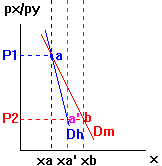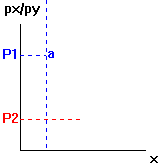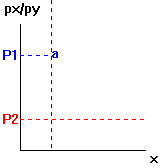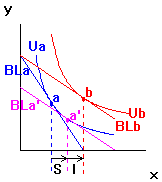
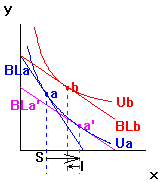
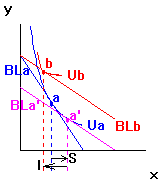
| Jim Whitney | Economics 250 |
Consider an individual who consumes two goods, x and y. Suppose
the price of x falls. This price decline will influence the individual's
consumption of x in two ways:
1. THE SUBSTITUTION EFFECT: The consumer will have an
incentive to substitute the now relatively cheaper x for the relatively
more expensive y, consuming more x and less y until the relative value
of x equals the new, lower opportunity cost of x.
Fall in Px/Py => fall in optimal MRS (= MUx/MUy).
Note: The substitution effect answers the question: What
would happen to your consumption of x if its price changes and your real
income (utility) is held constant instead of your money income?
2. THE INCOME EFFECT: The individual will adjust consumption
of x in the process of moving to a higher attainable level of utility at
the new, lower price of x.
Fall in Px/Py => increase in attainable U.
Note: The income effect answers the question: What will
happen to your consumption of x as you move to a new level of welfare (utility)
as a result of a price change?
Three possibilities arise:
Case 1: Normal good
Case 2: Inferior good
Case 3: Giffen good



